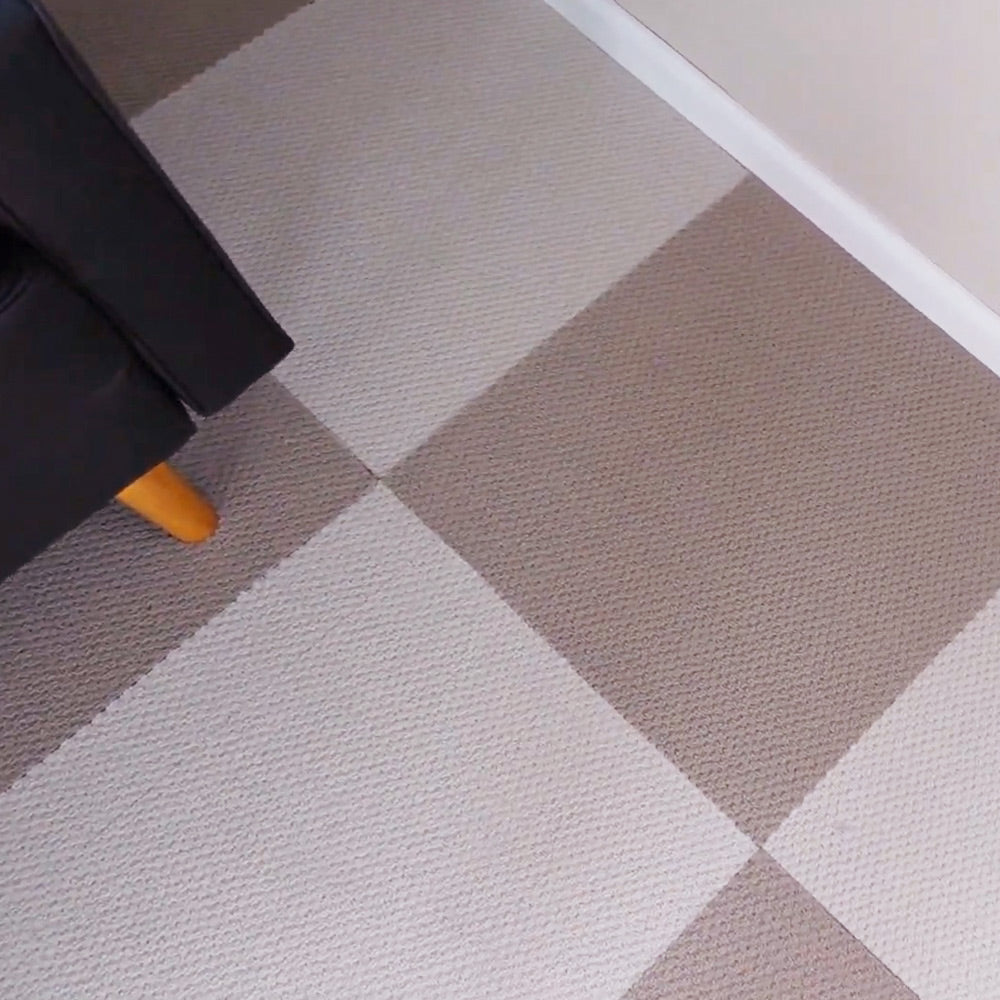Available for purchase in the USA
US

Choosing the right carpet squares for the basement is important for several reasons:
Basements are prone to moisture and humidity, leading to mould, mildew, and other issues if the wrong type of carpet is installed.
Basements are often used as multi-purpose spaces, such as family rooms, home theatres, and home offices, so the carpet must be durable and withstand heavy foot traffic.
The right carpet can add style and warmth to your basement, making it a more inviting and comfortable space.
When choosing carpet squares for basement, several factors should be considered, including the type of fibre, pile height, and backing. Synthetic fibres like nylon and polyester are ideal for basements because they are moisture-resistant and durable. The pile height should be low to prevent moisture from being trapped, and the backing should also be moisture-resistant. Additionally, the carpet squares should be easy to clean and maintain, as spills and stains will likely occur in a basement setting.

When choosing the right carpet squares for basement, several factors must be considered.
Here are some key factors to keep in mind:
By considering these factors, you can choose the perfect carpet squares for basement that are both functional and stylish.
Make sure the subfloor is clean, dry, and level before installation.
Acclimate the carpet tiles in the installation space for at least 48 hours before installation.
Verify that the carpet tiles are of the same dye lot and pattern before installation.
Plan the layout of the carpet tiles before installation to minimize cuts and waste.
Check the manufacturer's instructions for any specific installation requirements.
Start by locating the centre of the room and snapping a chalk line from the centre of opposite walls to form a cross.
Lay out the carpet tiles from the centre of the room, working outward, following the chalk lines as a guide.
Install the carpet tiles using the adhesive recommended by the manufacturer.
Cut tiles to fit around edges, walls, and other obstacles as needed.
Press the tiles firmly into the adhesive, ensuring they are level and tightly butted together.
Roll the installed carpet tiles with a 100-pound roller in both directions to ensure adhesion.
Vacuum the carpet tiles regularly to remove loose dirt and debris.
Spot clean spills immediately using a clean white cloth and a mild detergent solution. Blot, and do not rub the affected area.
Use a low moisture cleanings method such as encapsulation or dry powder cleaning for routine maintenance.
Avoid using harsh chemicals or abrasive cleaning tools on the carpet tiles.
Place walk-off mats at entrances to reduce the amount of dirt and moisture tracked onto the carpet tiles.
Consider hiring a professional carpet cleaning company to clean and maintain carpet tiles.

Choosing carpet squares for basement is an important decision, and there are several factors to consider, such as moisture resistance, durability, and cost. Synthetic fibres like nylon and polyester are highly recommended for their moisture resistance and durability. Carpet squares are a great basement option as they are easy to install and maintain.
If you're looking for an easy-to-install carpet option for your basement, Matace removable carpet tiles are a great choice. Unlike traditional carpets that must be glued together, Matace carpet squares can be non-slip directly on the ground, making installation a breeze. Their moisture-resistant backing and stain-resistant properties make them a durable and low-maintenance option.
When choosing carpet squares for basement, consider the type of fibre, pile height, texture, and cost that best suits your needs and budget. Regular cleaning and maintenance are crucial for the longevity and appearance of your carpet, and professional cleaning can be considered for deep cleaning.
For more information on choosing, installing, and maintaining a basement carpet, consult a professional carpet installer or a trusted home improvement store. You can also check out online resources like manufacturer websites and DIY tutorials to learn more about your options. Choosing carpet squares for basement can add comfort, style, and value to your home, so choose wisely.
Leave a comment